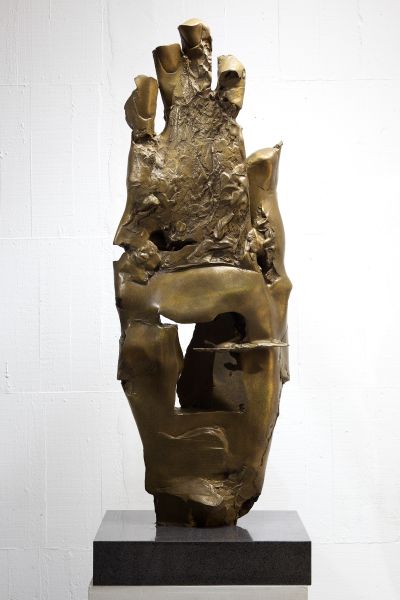Offered By

采泥藝術
台灣,台北市
-
有無之際:李光裕特別計劃
作為本屆威尼斯雙年展聖馬利諾國家館的特別計劃,本展將聚焦在台灣知名藝術家李光裕長達30年的雕塑創作及其藝術成就,包含李光裕特別為此創作的新作《鬥牛系列》以及其他時期代表作,結合紀錄片、藝術家檔案室、戶外作品等多種形式,透過深耕台灣雕塑藝術史的典型藝術家個案,延伸與世界的鏈接與對話。
「有無之際」(To Have and Have Not)有兩層含義:一方面,它是對李光裕獨具特色的雕塑美學的歸納,從1980年代至今,李光裕一直不斷在探索雕塑的新型空間關係,特別是發展出一種異於西方雕塑的「空」形式語言,透過虛與實、滿與空之間的對比,創造出富有情感張力的多重虛擬空間,也體現出一種深厚的東方美學境界與哲學理念。
另一方面,它亦是向展覽場地的既有歷史致敬。在1940末至50年代初,美國大文豪、也是「迷惘的一代」代表作家海明威曾在此旅居與寫作,「有無之際」即取自他的小說標題。在當今世界又開始變得充滿不確定性,本展覽與此一特定背景產生互文,在向海明威致敬的同時,藝術家力圖從人文主義視角勾勒與反思我們這個時代的精神世界,表達對本屆威尼斯雙年展主題「藝術萬歲」(Viva Arte Viva)的回應。
****************************************
To Have and Have Not: A Special Project of Lee Kuang-Yu
As the Special Project of the San Marino Pavilion of the 57 th Venice Biennale, Lee Kuang-Yu from Taiwan presents his creative works and showcases his artistic achievements during the past 30 years. His new series “Fighting Bull” dedicated to this event and representative works during other periods, in conjunction with documentary, studio archives and outdoor pieces are all part of the exhibition. Lee Kuang-Yu is a success story in the history of sculptures from Taiwan, with his connection and dialogues to the world.
To Have and Have Not conveys two meanings. Firstly, it is the synthesis of Lee Kuang-Yu’s own sculpture aesthetics. Since the 1980s, he has been exploring new spatial relationships in the realm of sculptures. He has developed another type of formal language and aesthetic concept of the “void” that differ from Western sculpture. Lee Kuang-Yu creates the multiple virtual spaces, filled with emotional tensions, with the contrast between fantasy and reality, fullness and emptiness. It is the manifestation of the Oriental aesthetics and philosophy, deep and profound.
Secondly, it is a tribute to the history of the venue. Ernest Hemingway, the wellknown American writer of the Lost Generation, once lived here in the late 1940s and the early 1950s. To Have and Have Not is a title of one of his novels. This exhibition creates with that time period, as our world is becoming uncertain again. In his homage to Ernest Hemingway, Lee Kuang-Yu seeks to depict and reflect the spirituality of our era from a perspective of humanism. It is a response to the theme “Viva Arte Viva” of 2017 Venice Biennale.












